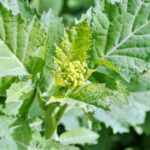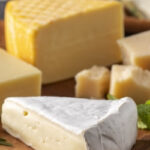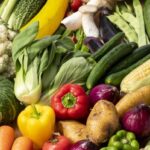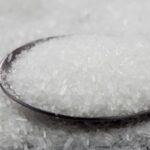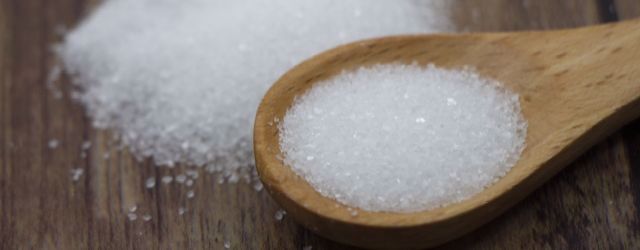
On February 9, 2023, the Ministry of Health, Labour and Welfare (MHLW) published the 10th edition of Japan’s Specifications and Standards for Food Additives (draft). Under the provisions of Article 21 of the Food Sanitation Act, the specifications and standards and the standards for use of food additives shall be included in Japan’s Specifications and Standards for Food Additives. Since the first edition was published in 1960, it has been revised periodically until the Supplement 2 to the 9th edition of Japan’s Specifications and Standards for Food Additives published in July 2022. This time, I would like to summarize the main points of the revision draft of the 10th edition of Japan’s Specifications and Standards for Food Additives.
Background and Policy on the 10th Edition of Japan’s Specifications and Standards for Food Additives
Since June 2008 the Discussion meetings have been held for 12 times, during which
- Requests for comments on the results of the discussions were made
- The collected comments for the requests were discussed
- Considering the above comments, the 10th edition of Japan’s Specifications and Standards for Food Additive (draft) was created.
This revision draft has been created reflecting the actual conditions of sales (and so on) by increasing the opportunities to solicit comments and to consider the issues.
Main points of the revision draft
The main revisions from the current 9th edition of Japan’s Specifications and Standards for Food Additives, Supplement 2 are from (1) to (9) as follows (draft).
(1) The specifications and standards (45 stipulated items) for 45 Existing food additives (Widely used as food over a long period of time in Japan) shall be newly established.
“Agrobacterium succinoglycan”, “Aspergillus terreus glycoprotein”, “Calcinated sea urchin shell calcium”, “Urushi Wax”, “Elemi resin”, “Sodium chloride-decreased brine”, “Rumput roman extract”, “Licorice oil extract”, “Enzymatically hydrolyzed guar gum”, “Quercetin”, “Glucosamine”, “Smoke flavourings”, “Gentian root extract”, “Spice extracts”, “Enzymatically modified lecithin”, “Rice bran wax”, “Cane wax”, “Artemisia sphaerocephala seed gum”, “Shellac wax”, “Jelutong”, “Sandalwood red” “Jamaica quassia extract”, “Vegetable carbon black”, “Essential oil-removed fennel extract”, “Horseradish extract”, “Calcinated coral calcium”, “Crude potassium chloride”, “Chicle”, “Tea extract”, “Capsicum water-soluble extract”, “Trehalose”, “Coffee bean extract (paste and liquid)”, “Tricalcium phosphate”, “Hyaluronic acid”, “Phytin (extract)”, “Branched cyclodextrin
“, “Heptane”, “Gallic acid”, “Myrrh”, “Mevalonic acid”, “Japan wax”, “Mannentake extract”, “Rosin”, “Rosemary extract (water-soluble) ”, “Rosemary extract (non-water-soluble) ”
(2) Regarding the specifications and standards of 2 Designated additives (approved by the Minister of MHLW) and 5 Existing additives, and 2 additive preparations, respective sub-specifications constituting the specifications and standards shall be specified as individual specifications.
*Please refer to “Regarding the establishment of the 10th edition of Japan’s Specifications and Standards for Food Additives” (pg1&2) for those additive names in the Reference below. (The same shall apply hereinafter)
(3) For the specifications and standards of 106 Designated additives (129 items), 58 Existing additives (85 items), and 2 additive preparations (3 items)
the followings shall be implemented;
-Improvement of test operability and accuracy
-Unification of names and structural formulas based on IUPAC nomenclature
-Unification of descriptions of terms, examples calculation formulas (and so on)
-Change of reagents used, etc.
(4) Elemental analysis and other test methods shall be newly defined as general test methods in “B. GENERAL TESTS”. For some existing general test methods, the used technology shall be updated, the apparatus/test solutions used shall be changed, the descriptions shall be maintained. Methoxy Determination shall be deleted.
(5) In the “C. REAGENTS, SOLUTIONS, AND OTHER REFERENCE MATERIALS” section, reagents in accordance with the provisions of the newly established General Tests and the specifications and standards shall be added, the old names of reagents shall be deleted, the items for each reagent shall be added/revised/deleted.
(6) The section on infrared reference spectra shall be deleted from “C. REAGENTS, SOLUTIONS, AND OTHER REFERENCE MATERIALS” and stipulated in each article of “D. MONOGRAPHS”.
(7) With regard to the sections “A. GENERAL NOTICES”, “B. GENERAL TESTS”, and “C. REAGENTS, SOLUTIONS, AND OTHER REFERENCE MATERIALS”
the followings shall be implemented;
-Improvement of test operability and accuracy
-Substitution of hazardous reagents for other reagents
-Unification of description methods of names and structural formulas, descriptions of terms/examples, (and so on) based on IUPAC nomenclature
(8) In the sections “E. STANDARDS FOR MANUFACTUREING” and “F. STANDARDS FOR USE”, “sand” and “insoluble mineral substance” shall be deleted and their specific substance names such as Pearlite, Granite porphyry shall be listed as shown in the table below.
| the 9th edition of Japan’s Specifications and Standards for Food Additives | the 10th edition of Japan’s Specifications and Standards for Food Additives (draft) | |
|---|---|---|
| STANDARDS FOR MANUFACTUREING | Talc, Sand, Diatomaceous earth, Silicon dioxide or Magnesium carbonate, or similar insoluble mineral substances….. | Talc, Diatomaceous earth, Silicon dioxide, Magnesium carbonate, Pearlite, Granite porphyry, Activated white clay, Cristobalite, Zeolite, or Vermiculite…. |
| STANDARDS FOR USE | …Acid clay, Kaolin, Bentonite, Talc, Sand, Diatomaceous earth and Perlite and similar insoluble mineral substances….. | Acid clay, Kaolin, Bentonite, Talc, Diatomaceous earth, Perlite, Granite porphyry, Activated acid clay, Cristobalite, Zeolite and Vermiculite…. |
(9) Designated additives that have been newly designated or whose the standards for use have been revised since the creation of the Supplement 2 to the 9th edition of Japan’s Specifications and Standards for Food Additives shall be listed in “D. MONOGRAPHS” and the “F. STANDARDS FOR USE”.
Future schedules
Public comments on this issue are expected to be solicited, so keep an eye on the future move on the revision.
References
- Standards for Food Additives
- the 10th edition of Japan’s Specifications and Standards for Food Additives (draft)
Share/Like/Follow:
Newsletter Signup
We issue monthly e-newsletters, which provide you with the latest updates on food labeling/regulations in Japan.
If you want to make sure to not miss any issue, please click below.
Related Service
Research Services on Ingredients & Food Labeling -For the Japanese Market-
We verify the conformity of ingredients and additives with the standards for use in Japan based on specifications such as formulation lists. We also verify the conformity of the proposed labeling of ingredient names, nutrients, etc. with the labeling standards based on specifications such as formulation lists.

Label bank Co., Ltd. Regulatory Review and Development
Born in Japan. Specializing in nutrition, she is engaged in research work on ingredients and additives imported to Japan from overseas, and provides consulting services on food standards, additives, and food labeling.


